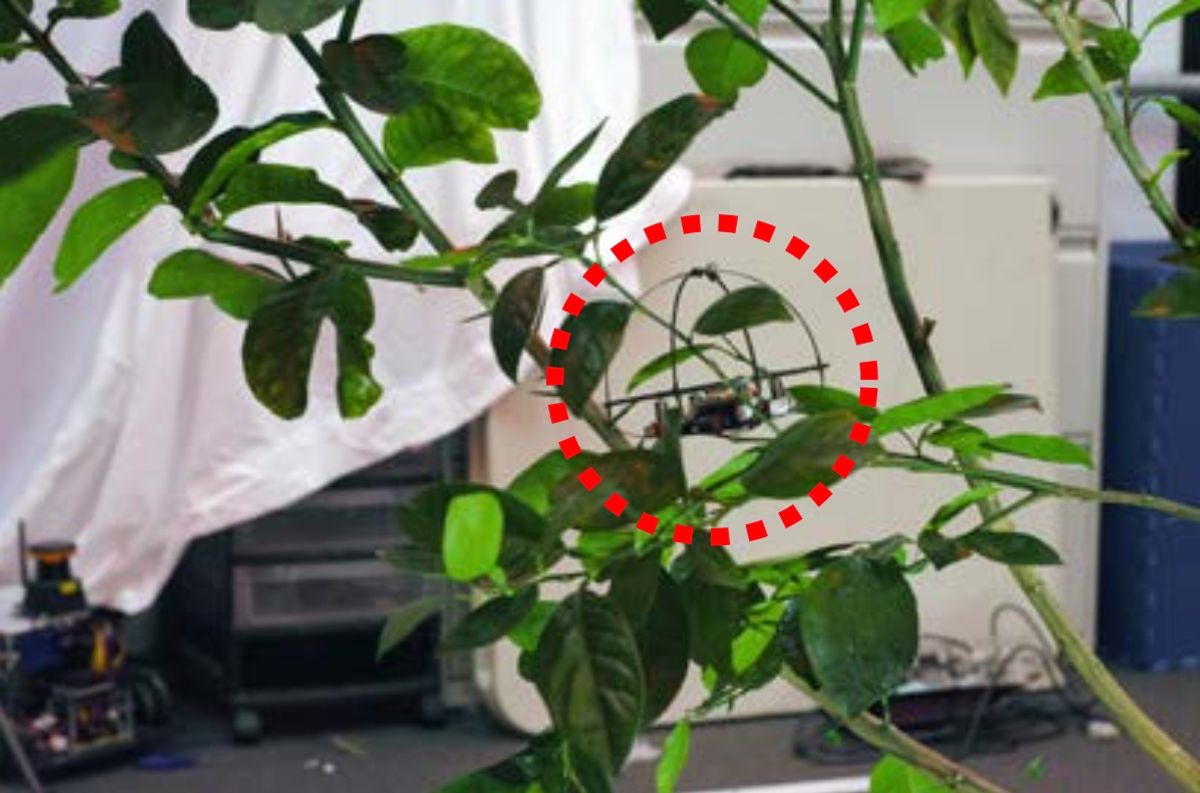Roboticists are putting a tremendous amount of time and effort into finding the right combination of sensors and algorithms that will keep their drones from smashing into things. It’s a very difficult problem: With a few exceptions, you’ve got small platforms that move fast and don’t have the payload capability for the kind of sensors or computers that you really need to do real-time avoidance of things like trees or power lines. And without obstacle avoidance, how will we ever have drones that can deliver new athletic socks to our doorstep in 30 minutes or less?
At the University of Pennsylvania’s GRASP Lab, where they’ve been working very, very hard at getting quadrotors to fly through windows without running into them, Yash Mulgaonkar, Luis Guerrero-Bonilla, Anurag Makineni, and Professor Vijay Kumar have come up with what seems to be a much simpler solution for navigation and obstacle avoidance with swarms of small aerial robots: Give them a roll cage, and just let them run into whatever is in their way. Seriously, it’ll be fine!

This kind of “It’ll be fine” philosophy is what you find in most small flying insects, like bees: They don’t worry all that much about bumbling into stuff, or each other; they just kind of shrug it off and keep on going. Or, if you’re a roboticist, you might say something like, “The penalty due to collisions is small at these scales, and sensors and controllers are not precise enough to guarantee collision-free trajectories,” so stop trying to solve the collision problem, and just focus on not completely trashing yourself when you hit something. (Swiss startup Flyability was among the first to demonstrate the benefits of collision robustness by equipping a regular-size drone with a gimballed protective cage and flying through forests and ice caves.)
In designing its flying vehicles, the UPenn group sought a bio-inspired approach, focusing on small and resilient quadrotors. The group built a fleet of 25-gram, 10-centimeter-wide pico quads, each featuring a lightweight, Gömböc-inspired self-righting roll cage made from a heat-cured yarn consisting of 12,000 strands of carbon fiber. The pico quads are piloted by a simple controller that “does not consider the position of other robots or obstacles, and does not contain special actions to command as a consequence of a collision,” the researchers wrote in a recent paper. All it does is try to stabilize the pico quads as best it can, while directing them toward a goal position. This works impressively well, even when the robot has zero knowledge of any obstacles or other pico quads that might be in its way:
“This is a radically different approach to flight where you simply rely on local information to navigate and build in the resilience to collisions that are inevitable because of noisy sensors and resource-constrained processors,” Vijay Kumar tells us. “We are trying to make robots that are safe and smart and that can operate in cluttered indoor environments.” In terms of applications where this kind of capability would be most useful, Kumar mentions as one example exploring an indoor environment during an emergency-response situation:
Imagine a search-and-rescue or disaster response scenario when you want a swarm of robots to enter a contaminated or dangerous building to create maps. The robots that [we have] created allow you to explore simple control algorithms that no longer require clever approaches to solving the exponentially hard problem of motion planning. If you allow robots to collide, you can use very simple algorithms for navigation.
“Bio-inspired Swarms of Small Aerial Robots,” by Yash Mulgaonkar, Luis Guerrero-Bonilla, Anurag Makineni, and Vijay Kumar from the University of Pennsylvania, has been submitted to Interface Focus.
[ Vijay Kumar Lab ]
Evan Ackerman is a senior editor at IEEE Spectrum. Since 2007, he has written over 6,000 articles on robotics and technology. He has a degree in Martian geology and is excellent at playing bagpipes.



